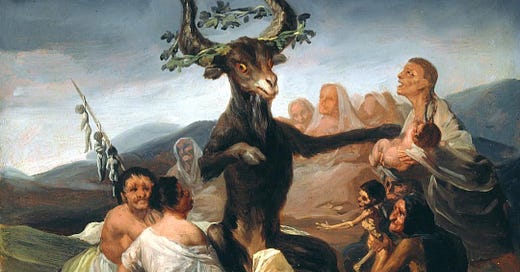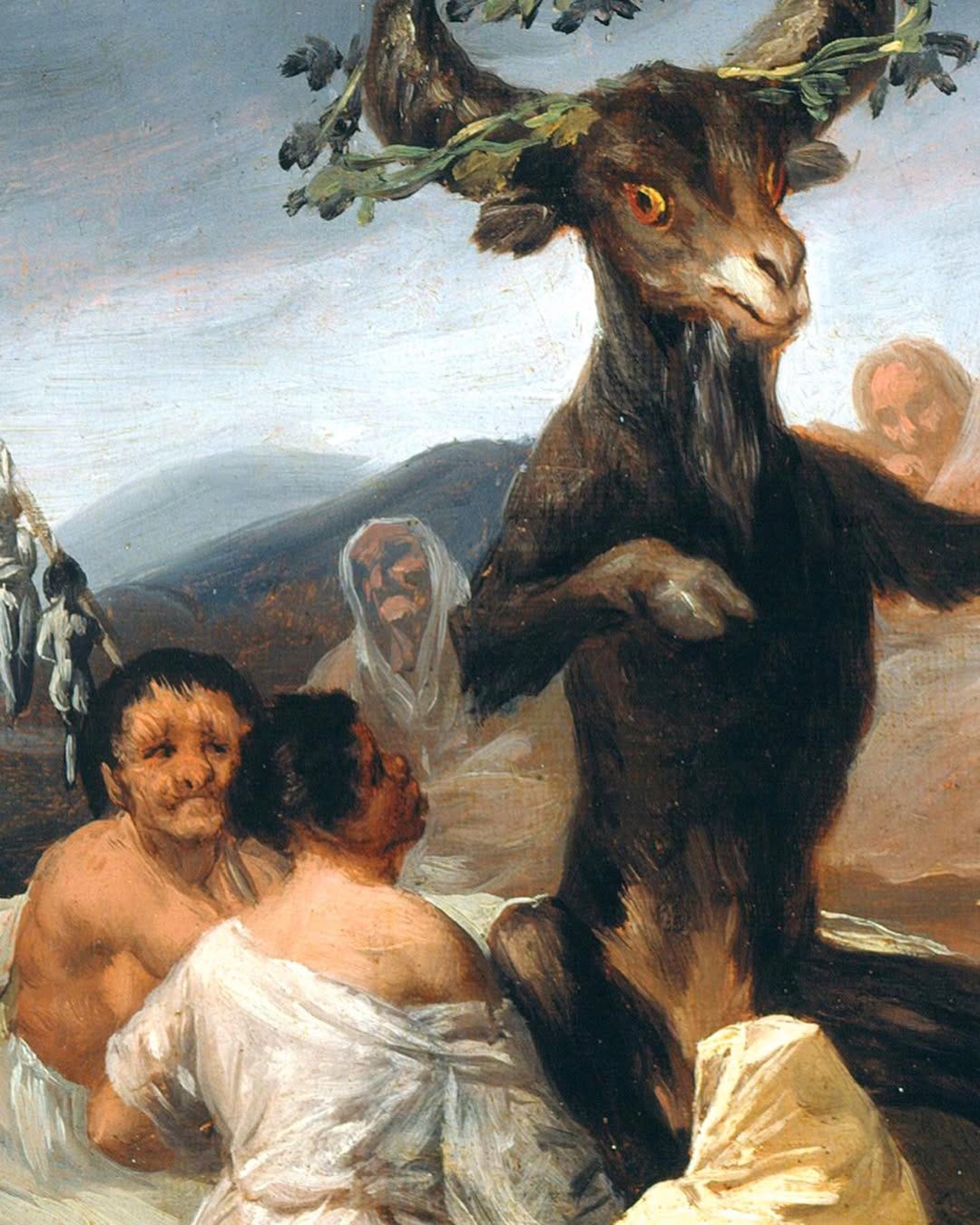FRANCISCO GOYA - WITCHES' SABBATH, 1797
The artwork depicts the devil as a goat adorned with garlands, encircled by a group of disfigured witches, both young and old, in a desolate, moonlit setting. The remains of two babies can be seen; one cast aside to the left, while the other is held by an old woman in the center foreground. A common superstition during that period held that the devil frequently fed on children and human foetuses.
This composition contains a subtle sexual undertone. There is a climbing vine wrapping around the goat’s horns, a fig. In the Bible, Adam and Eve covered their private parts with fig leaves after eating the Forbidden Fruit. During the early modern period, these leaves were utilized not just for biblical characters but also for statues from Ancient Greece and Rome. The interpretation of nudity shifted from admiration of a fit physique to being perceived as a disgraceful and immoral act that violates societal standards. Consequently, numerous ancient sculptures from the early modern era had their private parts covered with sculpted fig leaves. Utilizing fig leaves on the goat's horns in this masterpiece implied that the Devil lured witches, leading them away from Christian virtues.
Goya’s intention was no doubt to ridicule these superstitions and express anger at their use by senior figures in the Church and government to frighten the poor into submission. It has also been interpreted as a protest against the Spanish Inquisition which had for 300 years held Spain in a grip of terror, burning at the stake thousands of innocent people accused of witchcraft and religious heresy.




